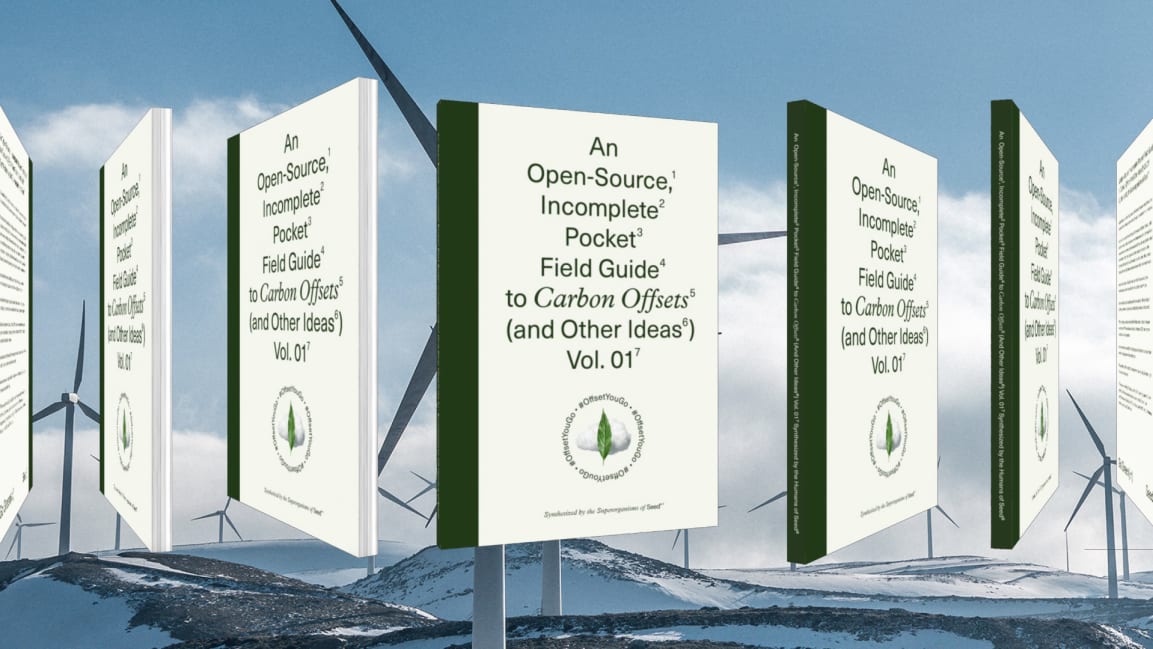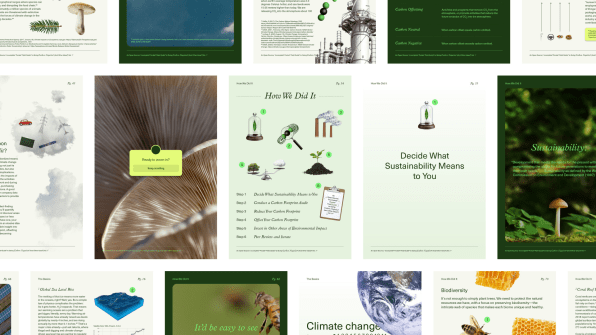This field guide teaches companies how they can go carbon negative

If you’re going for a hike in the woods, you might bring along a field guide to help you identify wildflowers or fungi. Often pocket-sized, field guides provide a base of knowledge for identifying wildlife and understanding taxonomy, meant to be referenced right in the field. If you work for a small company trying to lessen its environmental impact, a microbial sciences company called Seed hopes you’ll refer to its new field guide on going carbon negative, meant to be a primer to the complex world of corporate sustainability.
Seed’s main work is developing ways to use bacteria to impact both human health through probiotics, and environmental health by researching how bacteria can advance biodiversity, for instance by helping honeybees resist infection. (Seed recently raised $40 million in Series A funding, with plans to create oral care, skincare, and infant health products.) “These are big ideas that are really misunderstood and very confusing and murky,” says cofounder and co-CEO Ara Katz. To Seed, it’s important to deeply understand that science, and help other people understand it too. The company has launched Instagram courses and its own “Seed University” for influencers.

As Seed worked toward sustainability, it wanted to learn more about the world of carbon offsets and how to go carbon negative, and it decided to turn all that information into a resource for other companies. The field guide, which runs about 80 pages, is not meant to be the final word on how to run a sustainable company, and Seed is open about that—it’s titled “An Open Source, Incomplete Pocket Field Guide to Carbon Offsets (and Other Ideas) Vol. 01.” It’s meant to be one tool, and a call to action, Katz says, for others to build on this sustainability research and work.The guide starts with the basics, explaining “climate change 101” and defining terms such as “carbon footprint” and “carbon offsetting” to ensure everyone starts at the same level. It overviews the symptoms of climate change—melting ice sheets, sea-level rise, ocean acidification, species loss—touches on environmental justice, and notes that we can still curb the most catastrophic impacts of climate change by stopping the release of CO2 into the atmosphere and supporting transitions in energy, land, and infrastructure systems.
One way to curb emissions is to go carbon negative, and the guide explains how a company can conduct a carbon-footprint audit (of all its electricity use, business travel, packaging, and so on); provides some questions to make sure your company isn’t greenwashing; gives advice on reducing that footprint by changing packaging materials or shipping processes; and gets into how to understand and vet carbon offsets. Along the way, Seed is open about its own process, sharing anecdotes about how it started a “sustainability” Slack channel to keep the conversation flowing internally, and reporting that when it did its first audit, its carbon footprint was 1,800 metric tons.Carbon offsets aren’t a complete solution to our climate crisis, especially if they’re inaccurate or allow a company to think offsets provide them an allowance to emit more greenhouse gases. But they are one tool, and that’s why the field guide includes them among other advice, such as reducing your overall carbon footprint and investing in environmental research. The guide is specifically designed for growing companies, so they can bake sustainability efforts into their business early on. “If you can create the infrastructure and the auditing . . . and really integrate it into the DNA of how you operate your business, it becomes just as important as any other business metric,” Katz says. It’s also easier to scale these practices, she notes, than to wait until your company is larger and scramble to set up an audit or find reputable offsets…
Read the rest of this article on Fast Company.